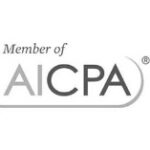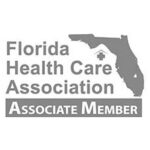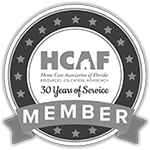As part of our ongoing blog series, we at Walters want to get even more granular in ways that our readers can maximize their time to make their businesses more efficient and more profitable. As we talk about the healthcare industry often, we want to focus on a subset of that field—hospice care—with this article covering the important issue of how best to process hospice claims. We all like to get paid, and there are steps to better realize reimbursement so that they are fair, on time, and within compliance.
To begin with, hospice billing can be complex as it requires a good grasp of differing Medicare regulations and an understanding of what best practices are for submitting these claims. We hope this guide clarifies the process and welcome your questions or feedback.
Understanding the Medicare Hospice Benefit
An Overview
Let’s start with the Medicare Hospice Benefit itself. This is a comprehensive program that is designed to give end-of-life care to terminally ill patients. First off, this federal program prioritizes dignity, comfort, and quality of life over curative treatment. Rather, it focuses on palliative care, which addresses symptom relief and pain management. Specifically, the program features include:
- Eligibility Requirements: Patients must be given a terminal diagnosis with a prognosis of six months or less of life left that is certified by a physician. These patients also must choose to have hospice care at this point and forego any curative treatments moving forward.
- Range of Services: There are multiple services that may be included, such as a hospice aide, medical equipment, psychological counseling, respite care, and medications for symptom management.
- Flexible Settings: Patients can receive hospice care in multiple settings such as assisted living facilities, skilled nursing facilities, and in their homes (a location becoming even more prevalent with changes in laws and social norms). The goal is to ensure accessibility to care that will meet a variety of specific needs.
Four Levels of Hospice Care
To get a bit more specific related in terms of the Medicare Hospice Benefit, four levels of care to address varying needs are defined. These are:
- Routine Home Care: The most common level is delivered at the patient’s residence.
- Continuous Home Care: Around-the-clock care during crises to manage acute symptoms.
- Inpatient Respite Care: Temporary care in a facility to relieve caregivers. Respite care must be provided in an approved inpatient facility to qualify for reimbursement.
- General Inpatient Care: Intensive care for pain or symptom management that cannot be provided in other settings.
Hospice Claims Processing: Key Requirements for Submission
There are some specific rules related to proper claims processing when it comes to hospice care. These must be followed correctly so the business entity can get timely reimbursement and stay within Medicare guidelines. Issues include:
- Notice of Election (NOE): This is the initial claim that can only be submitted once a Notice of Election (NOE) has been processed. This is the document that notifies Medicare that a patient has foregone curative care and instead has chosen hospice care.
- Monthly Submission: Hospice claims are submitted monthly, with one claim allowed per month and per beneficiary. This has some exceptions, such as in cases of discharge or revocation and subsequent reelection of hospice care.
- Sequential Billing: As mentioned, hospice claims are submitted monthly, and ongoing claims must be billed sequentially, meaning they are submitted for processing in chronological date order.
- Notice of Termination/Revocation (NOTR): Another important guideline is related to termination or revocation of services. Self-explanatory, a Notice of Termination/Revocation (or NOTR) is the proper documentation used when a hospice patient is discharged or revokes their service.
Billing for Hospice Care: Reporting Prescription Drugs
Another rule related to hospice care, claims, and billing guidelines is related to medications. Hospices need to report information on prescription drugs that are used for symptom management and palliation during hospice on their claim submission forms. Both injectable and non-injectable drugs have to be reported on a line-item basis and correspond to the amounts dispensed by the pharmacy. Interestingly, drug costs are included in the Medicare daily reimbursement rates and are not reimbursed as separate expenses.
Electronic Claims Submission
Hospice entities can submit claims electronically by using what’s called the CMS-837I form, which is the standard form to submit healthcare claims used by many types of healthcare businesses in addition to hospices, including hospitals, skilled nursing facilities, outpatient therapy (such as PT) companies, home health agencies, and more.
The process continues with a Medicare Administrative Contractor (or MAC) processing the claims so that reimbursements are handled correctly and quickly. Electronic submission is best as it is the most efficient method and typically helps lower error rates.
Quality Reporting and Compliance
The Hospice Quality Reporting Program (HQRP)
To help with reporting and compliance, Medicare has developed the Hospice Quality Reporting Program (HQRP) to improve the quality of hospice care services. All Medicare-sanctioned hospice businesses must be part of this program. It helps agencies avoid penalties and makes full reimbursement for services more likely. A quick review of the program:
- Quality Data Submission: Fundamentally, hospices must report their performance metrics, such as patient and caregiver satisfaction, outcomes, and symptom management.
- Compliance Requirements: When hospice care providers fail to participate in HQRP, it can result in a 2% reduction (a penalty) in any reimbursements from Medicare for services provided.
- Audits and Reviews: For oversight, audits can point hospice care providers to areas of their businesses ripe for improvement. While audits can be daunting, they do help make sure that claim submission and billing/reimbursement procedures do indeed match with the standards that Medicare puts forth. As we’ve mentioned in other articles on this site, the help of qualified outside experts, such as an accounting firm with relevant industry experience, is always a good consideration.
Best Practices for Accurate Claims Submission
To streamline these points, we offer a quick set of “Best Practices” for hospice entities to follow to reduce errors and delays in claims:
- Submit Claims Electronically: Use technology such as online claim submission with the appropriate forms, such as CMS-837I.
- Verify Patient Information: Make sure all your patient data is accurate and up to date before submissions. Discrepancies can create red flags and slow processing times.
- Ensure Sequential Billing: Keep claims in order based on dates to prevent any processing issues.
- Accurate Coding and Billing: Healthcare employees will know this best practice is crucial: use the right codes for all services and medications used during hospice care to stay compliant with Medicare.
- Make Use of Medicare Itself! A good source of information for how to best submit claims is the CMS website and what’s called the Medicare Claims Processing Manual (See the end of this article for more information.)
Final Thoughts: Continuous Improvement and Additional Resources
A real constant in our messages to our readers is that the healthcare industry is often changing due to market dynamics and government regulations. Hospice claims submission and billing is no different. It’s a complex process that seriously requires ongoing attention to detail and compliance. As laws also change, staying abreast of the newest regulations is important. Providers should review their billing practices, make sure they are making the right investment in staff training, and use technology to their benefit. And remember, outside counsel can help with this and other financial and accounting matters.
Lastly, for those who need detailed instructions on billing and claims submissions for hospice care, the Centers for Medicare and Medicaid Services offers the Medicare Claims Processing Manual. Providers can refer to this resource for help with Medicare requirements and to avoid errors that could delay reimbursement. It’s another tool that can support the invaluable mission of hospice care: to give comfort and dignity to patients and their families.












